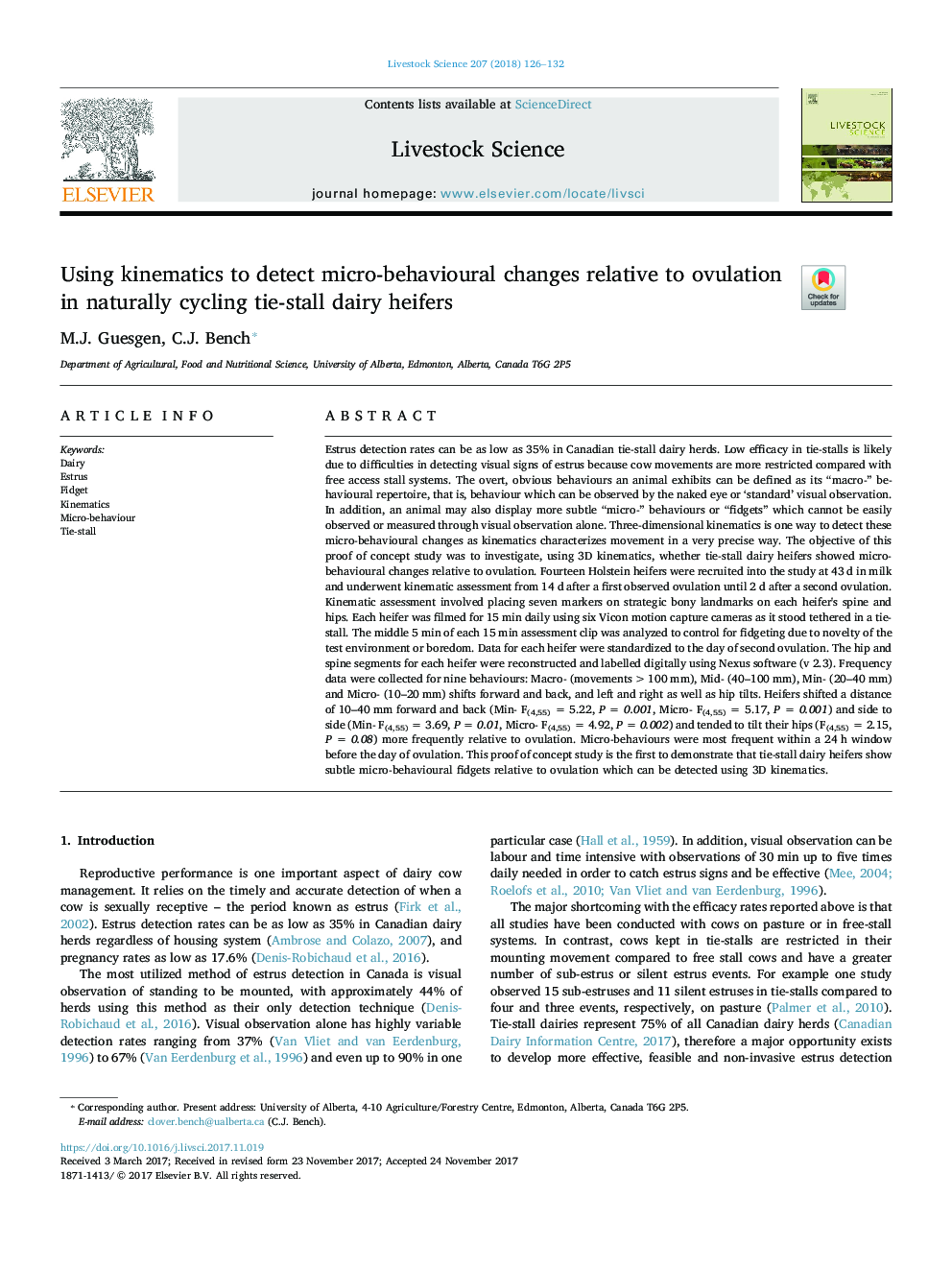| کد مقاله | کد نشریه | سال انتشار | مقاله انگلیسی | نسخه تمام متن |
|---|---|---|---|---|
| 8502085 | 1553925 | 2018 | 7 صفحه PDF | دانلود رایگان |
عنوان انگلیسی مقاله ISI
Using kinematics to detect micro-behavioural changes relative to ovulation in naturally cycling tie-stall dairy heifers
ترجمه فارسی عنوان
با استفاده از سینماتیک برای تشخیص تغییرات میکرو رفتاری نسبت به تخمک گذاری در تلیسه های شیری که به طور طبیعی دوچرخه سوار می شوند،
دانلود مقاله + سفارش ترجمه
دانلود مقاله ISI انگلیسی
رایگان برای ایرانیان
کلمات کلیدی
موضوعات مرتبط
علوم زیستی و بیوفناوری
علوم کشاورزی و بیولوژیک
علوم دامی و جانورشناسی
چکیده انگلیسی
Estrus detection rates can be as low as 35% in Canadian tie-stall dairy herds. Low efficacy in tie-stalls is likely due to difficulties in detecting visual signs of estrus because cow movements are more restricted compared with free access stall systems. The overt, obvious behaviours an animal exhibits can be defined as its “macro-” behavioural repertoire, that is, behaviour which can be observed by the naked eye or 'standard' visual observation. In addition, an animal may also display more subtle “micro-” behaviours or “fidgets” which cannot be easily observed or measured through visual observation alone. Three-dimensional kinematics is one way to detect these micro-behavioural changes as kinematics characterizes movement in a very precise way. The objective of this proof of concept study was to investigate, using 3D kinematics, whether tie-stall dairy heifers showed micro-behavioural changes relative to ovulation. Fourteen Holstein heifers were recruited into the study at 43Â d in milk and underwent kinematic assessment from 14Â d after a first observed ovulation until 2Â d after a second ovulation. Kinematic assessment involved placing seven markers on strategic bony landmarks on each heifer's spine and hips. Each heifer was filmed for 15Â min daily using six Vicon motion capture cameras as it stood tethered in a tie-stall. The middle 5Â min of each 15Â min assessment clip was analyzed to control for fidgeting due to novelty of the test environment or boredom. Data for each heifer were standardized to the day of second ovulation. The hip and spine segments for each heifer were reconstructed and labelled digitally using Nexus software (v 2.3). Frequency data were collected for nine behaviours: Macro- (movements > 100Â mm), Mid- (40-100Â mm), Min- (20-40Â mm) and Micro- (10-20Â mm) shifts forward and back, and left and right as well as hip tilts. Heifers shifted a distance of 10-40Â mm forward and back (Min- F(4,55) = 5.22, P = 0.001, Micro- F(4,55) = 5.17, P = 0.001) and side to side (Min- F(4,55) = 3.69, P = 0.01, Micro- F(4,55) = 4.92, P = 0.002) and tended to tilt their hips (F(4,55) = 2.15, P = 0.08) more frequently relative to ovulation. Micro-behaviours were most frequent within a 24Â h window before the day of ovulation. This proof of concept study is the first to demonstrate that tie-stall dairy heifers show subtle micro-behavioural fidgets relative to ovulation which can be detected using 3D kinematics.
ناشر
Database: Elsevier - ScienceDirect (ساینس دایرکت)
Journal: Livestock Science - Volume 207, January 2018, Pages 126-132
Journal: Livestock Science - Volume 207, January 2018, Pages 126-132
نویسندگان
M.J. Guesgen, C.J. Bench,
